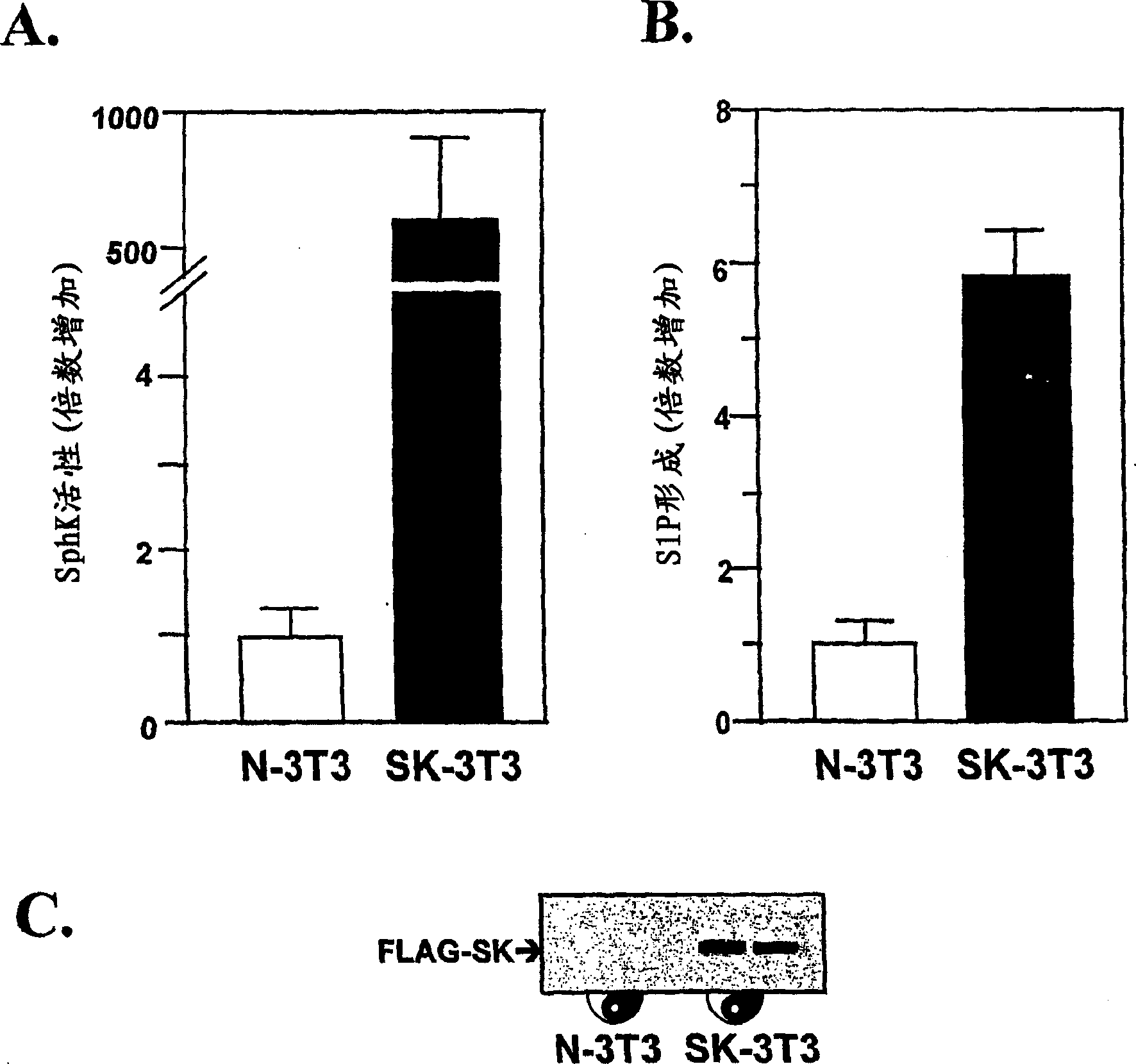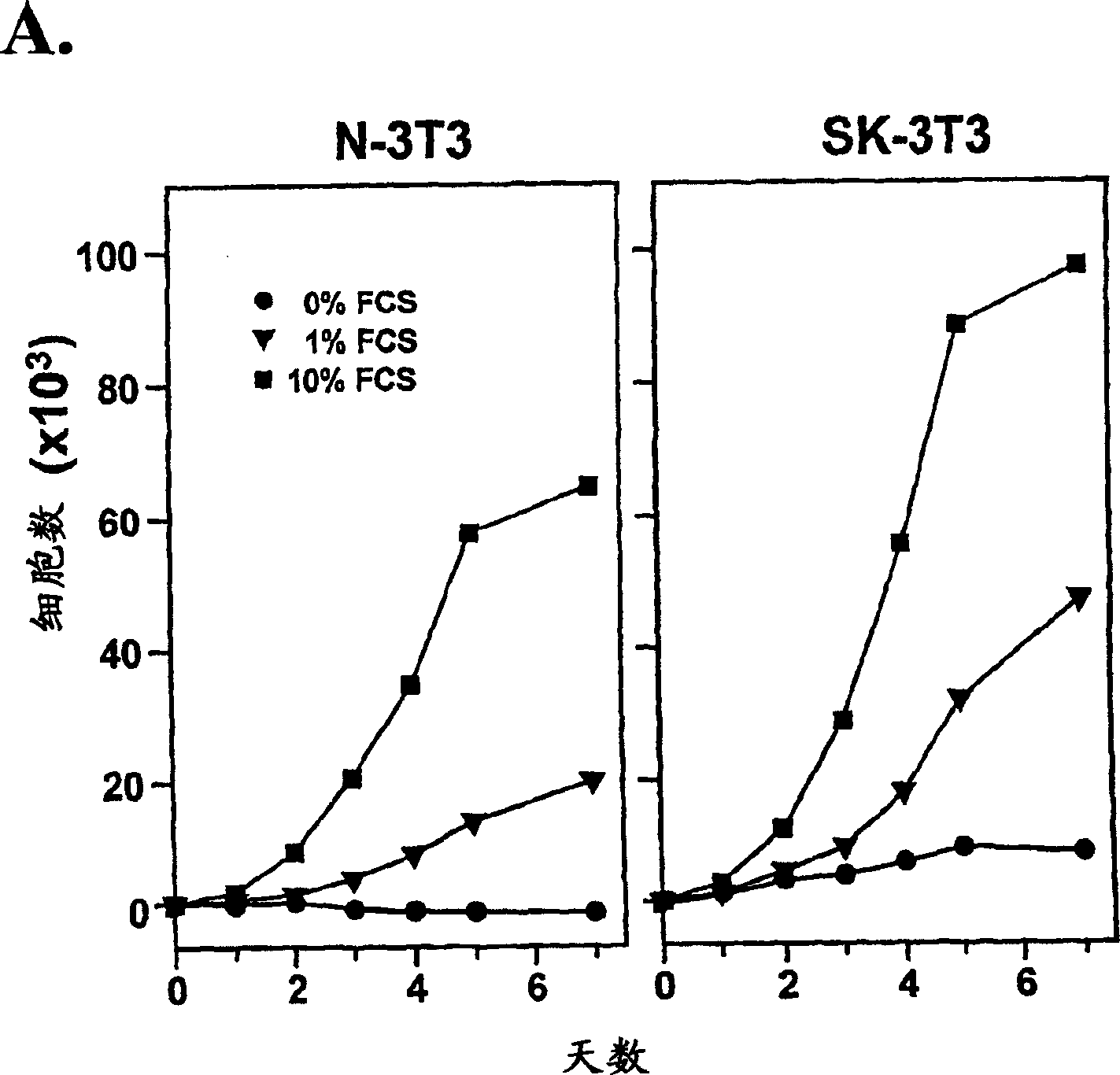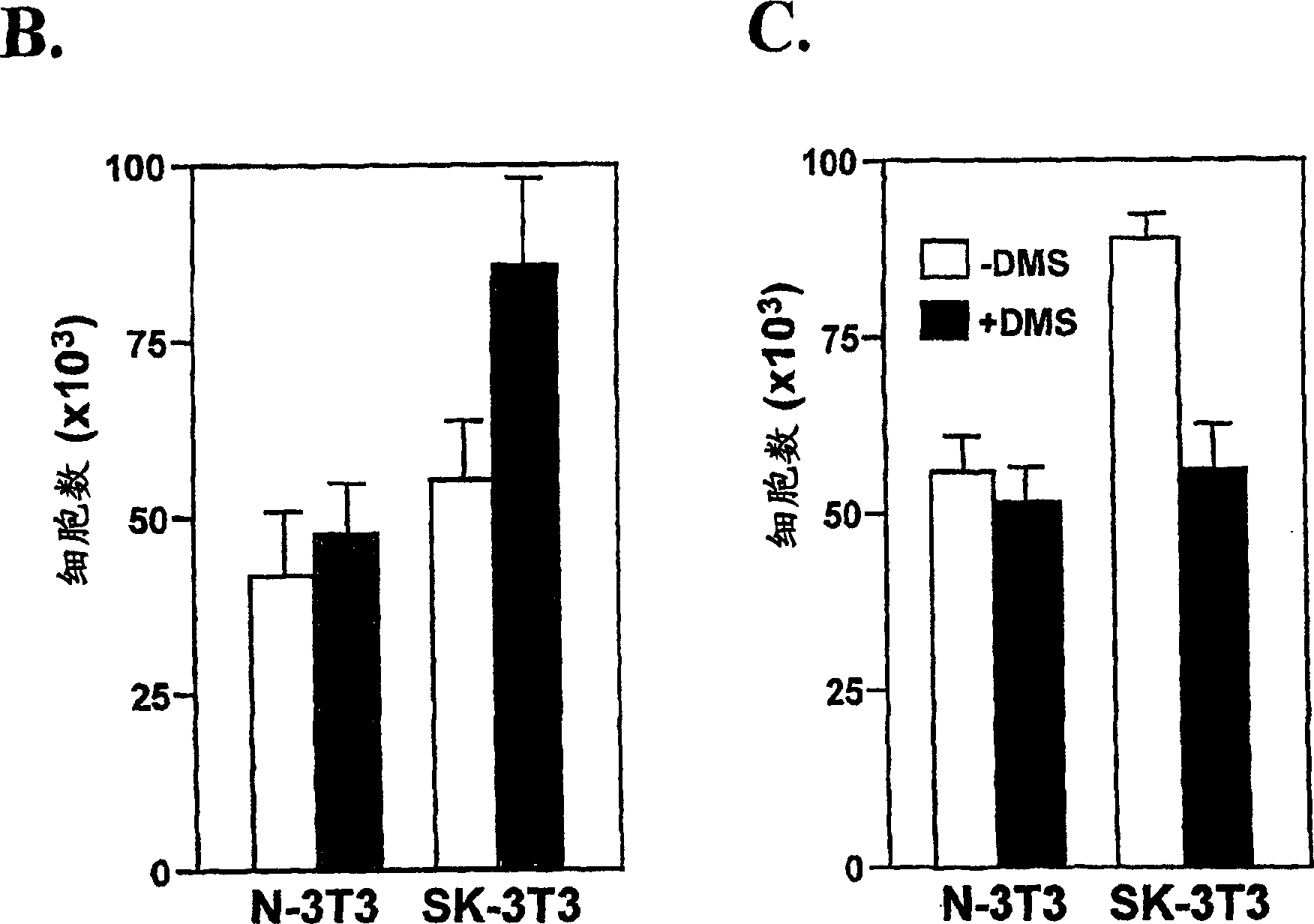Sphingosine kinase and uses thereof
A technology of sphingosine kinase and dimethylsphingosine, applied in the field of treatment and/or preventive treatment of cancer, down-regulation of neoplastic cell growth, can solve the problem that has only just begun to be understood, and the signal has not been confirmed OK, etc.
- Summary
- Abstract
- Description
- Claims
- Application Information
AI Technical Summary
Problems solved by technology
Method used
Image
Examples
Embodiment 1
[0129] Transfection and analysis of NIH 3T3 fibroblasts
[0130] To study the oncogenic role of SphK, untransformed NIH 3T3 fibroblasts were transfected with human SphK cDNA recently cloned in our laboratory (Piston et al., 2000). The pooled stable transformants (termed SK-3T3) were used to avoid phenotypic artifacts that might result from the selection and propagation of individual clones from single transfected cells. In the SK-3T3 cell bank, the SphK activity increased more than 600-fold compared with the empty vector-transfected NIH 3T3 cells (N3T3) (attached figure 1 a). Immunoblot analysis revealed a specific protein band with an apparent molecular weight consistent with the predicted size of FLAG-tagged human SphK detected only in the SK-3T3 cell pool but absent in N-3T3 cells (attached figure 1 c). Intracellular levels of SphK's direct product, S1P, were also increased 4-5-fold in SK-3T3 cells, suggesting that stable transfectants harbor constitutively activated Sph...
Embodiment 2
[0134] Transfection and analysis of oncogene-transformed cells
[0135] When NIH 3T3 cells were transfected with activated mutant Ras (V12-Ras), SphK activity was significantly increased by 178±22% compared with parental cells (attached image 3 c). In contrast, cells transfected with v-Src (attached image 3c) or dominant negative Ras (N17-Ras) did not alter SphK activity, suggesting a specific relevance of SphK in an oncogenic transformation. Furthermore, foci formation was reduced by 42 ± 4% in V12-Ras-transformed cells when cells were treated with DMS, but not altered in v-Src-transformed cells (attached image 3 d), thus demonstrating the important role of SphK in Ras conversion. The partial effect of DMS at the fully effective dose (2.5 μM) in SphK-transformed cells suggests the possibility of a functioning SphK-independent pathway (attached image 3 d). On the other hand, the inability of DMS to inhibit v-Src conversion rules out a non-specific effect of DMS or gen...
Embodiment 3
[0137] Analysis of tumorigenicity
[0138] The tumorigenicity was then directly tested in NIH 3T3 cells overexpressing SphK. When SphK-transfected NIH 3T3 cells from a pool of stable transformants or selected clones were injected subcutaneously into NOD / SCID mice, tumors became evident at the site of injection within 3-4 weeks (Table 4 and Supplementary Table 4). Figure 4 ). Mice injected with vector-transfected 3T3 cells did not induce tumors during the 10-week observation period. Histological appearance of tumor sections showed fibrosarcomatous morphology with many mitotic figures (attached Figure 4 ). Western blot analysis of tumor-derived extracts revealed high levels of FLAG-tagged proteins (attached Figure 4 ), thus indicating that the neoplastic cells retained and expressed the SphK transgene. Thus, tumors developed from injected SphK-transfected cells but not from autonomously transformed NIH 3T3. This is the first demonstration that the wild-type lipid kinase...
PUM
 Login to View More
Login to View More Abstract
Description
Claims
Application Information
 Login to View More
Login to View More - R&D
- Intellectual Property
- Life Sciences
- Materials
- Tech Scout
- Unparalleled Data Quality
- Higher Quality Content
- 60% Fewer Hallucinations
Browse by: Latest US Patents, China's latest patents, Technical Efficacy Thesaurus, Application Domain, Technology Topic, Popular Technical Reports.
© 2025 PatSnap. All rights reserved.Legal|Privacy policy|Modern Slavery Act Transparency Statement|Sitemap|About US| Contact US: help@patsnap.com



